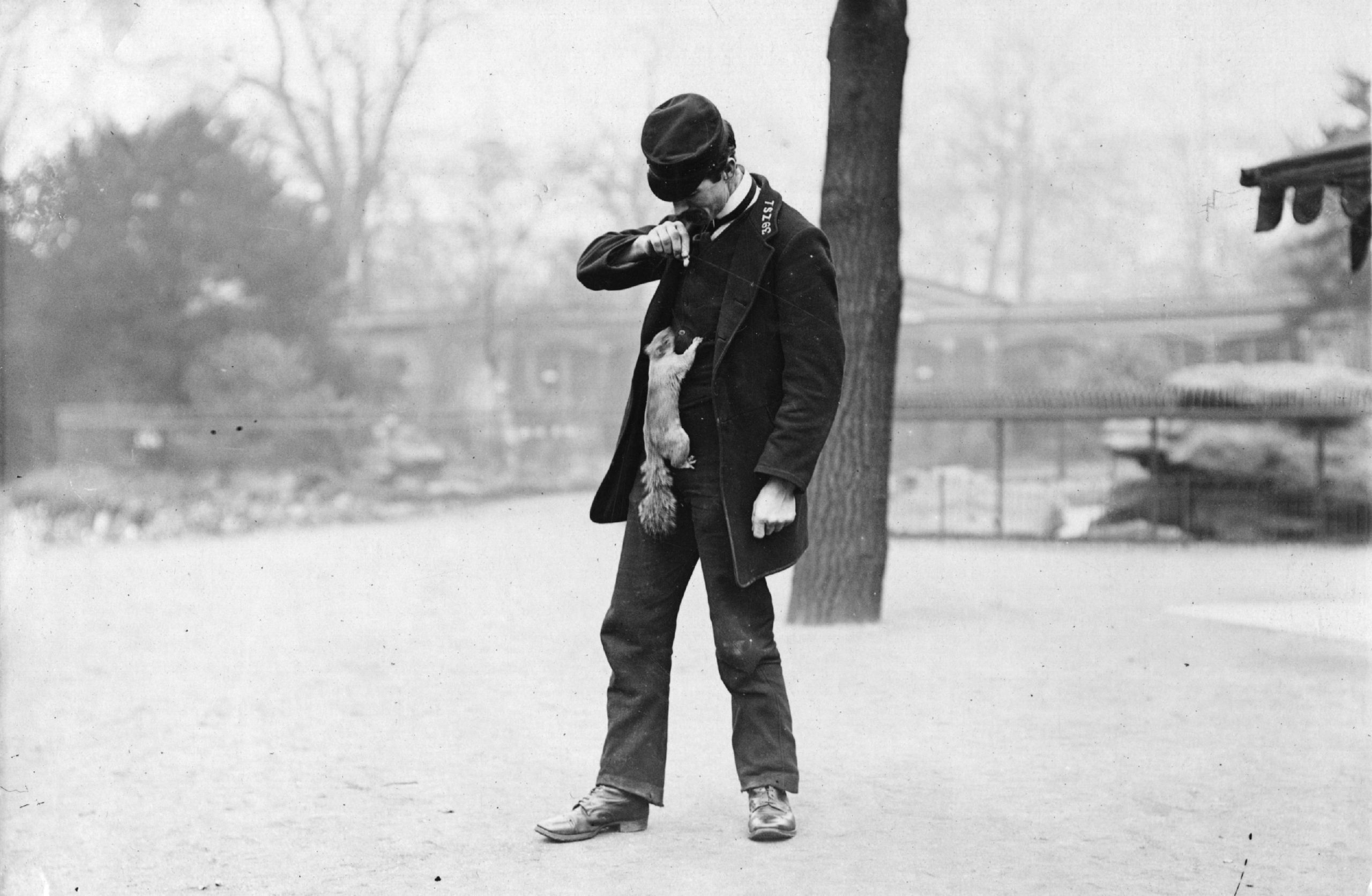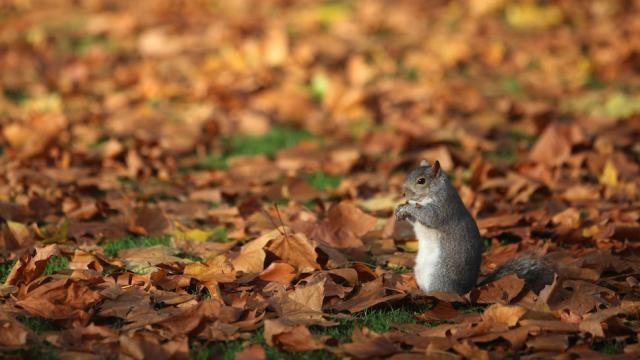In most American cities, it’s hard to walk through a park without spotting a grey squirrel. Those bushy-tailed little buggers are everywhere, chomping on nuts and climbing up trees — but not thanks to nature. No sir. They’re there because we put them there to entertain us — among other things.
As a new paper published the Journal of American History by a professor at the University of Pennsylvania named Etienne Benson explains, the story of America’s squirrels goes back to the early 19th century. At that point in time, squirrels were just another animal running around the woods, mainly useful as a source of food for frontiersmen. If you saw a squirrel in the city, it was almost certainly being kept as a pet. One escaped pet squirrel in New York City, circa 1856, drew a crowd of hundreds according to one of the city papers — which called the squirrel an “unusual visitor.”
Around the same time, a sea change in our relationship with squirrels was already underway in Philadelphia. The city had released three squirrels in Franklin Square in 1847 and had provided them with food and boxes for shelter — and the people loved it. One visitor is quoted as saying “it was a wonder that [squirrels] are not in the public parks of all great cities.” In the years that followed, the trend spread to Boston and New Haven, where squirrels soon grew so fat from humans feeding them that they were falling out of the trees. Cities even started planting nut-bearing trees so that the squirrels would have their own food source.

The squirrel fad really took off in the 1870s, thanks to Frederick Law Olmstead’s expansive parks. Benson says that the movement to fill the parks with squirrels “was related to the idea that you want to have things of beauty in the city, but it was also part of a much broader ideology that says that nature in the city is essential to maintaining people’s health and sanity, and to providing leisure opportunities for workers who cannot travel outside the city.” These squirrels were possibly the only wildlife the workers would ever see.
Central Park led the way in the second wave of squirrels introduced into American cities. A small number of squirrels planted in the park in 1877 soon grew into a sizeable population. By the time it had reached an estimated 1,500 squirrels six years later, authorities even talked about culling the population so that it didn’t get out of control. At the same time, squirrel populations were growing around the country, with squirrels gracing the lawns of both Harvard Yard and Washington D.C.’s National Mall.
Feeding the squirrels became a past time during these years, and was eventually seen by naturalists and conservationists as a way to help humans learn how to better treat animals. It wasn’t just confined to parks at this point, either. There are many accounts from the late 19th century of people in the suburbs feeding squirrels. Ernest Thompson Seton, who helped found the Boy Scouts, even wanted to use feeding squirrels as a way “to cure boys of their tendency toward cruelty.”
So next time you see a squirrel in the park, drink it in. (Not literally of course — one should never drink squirrels.) These little critters were put there for your entertainment. But perhaps more importantly, they were put there to remind us of how man and nature must get along, even if it takes a little effort. Though honestly, how much effort does it take to throw a squirrel an acorn? [Journal of American History]

Image via Getty / Flickr / Dave Williss
